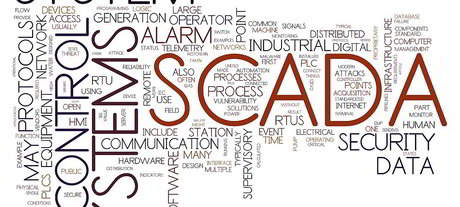We need to talk about SCADA

It wasn’t that long ago that the word ‘communication’ invariably meant person-to-person verbal exchange. But as the world has become more connected, and our interactions with each other have become increasingly digital, our views on what constitutes communication have broadened.
Within the SCADA world this has been the case for a long time. These supervisory control and data acquisition systems perform a critical role for utilities, ensuring the water flows when we turn the tap, the lights go on when we flick the switch or the gas is there when we use the stove. Radiocommunications are a critical component of these systems.
But there is a crucial difference between the sender and the receiver of the message. SCADA is a complex ecosystem, where the sender could be a sensor or an intelligent device such as a variable speed drive. In these situations, an automated controller acts as an interface, interpreting the signals, making local control decisions and sending back derived information. At the receiving end, the information is evaluated by a master station, comprising items such as SCADA software or historian and analytical software, before any human involvement is required. This broadens the communications system to much more than just a radio network.
The language or communications protocol used is very important. Adopting a common language between devices, and across multiple systems and users, is the recommended approach. As a result we see the implementation of open protocols such as the Distributed Network Protocol (DNP) becoming a common standard and practice. However, language selection is only the beginning — how we use the language is an area that needs improvement. To use an everyday example, an Australian will ask you to pass the esky, while a New Zealander will call for the chilly bin. Similar subtle differences occur when interfacing to devices for SCADA use.
The type of conversation also has a bearing; often bandwidth is limited, so effective communication becomes more important. Too often do I see systems with a basic polling methodology. This is equivalent to me asking you to tell me everything about you every time we meet. A more natural and efficient way is for me to remember what you told me last time, asking only for updates on anything new. Protocols such as DNP allow for more efficient SCADA communications to take place, but don’t always enforce the most efficient use. What is also needed is a set of standards or best-practice guides that sit over the top of these base protocols to ensure efficiency. As vendors, we can produce open, integrated products and systems to facilitate this approach.
Ideally, users and operators will work together to document how and why these methodologies should be used. But just as importantly, involving vendors in these discussions will ensure that the correct open interfaces are implemented and adopted in future products, ensuring effective and agile communication ecosystems are devised that can evolve at the rate required.
'Curving' light beams could enable terahertz comms
In the near future we'll need to transition to much higher communication frequencies than...
Antenna upgrade enables better sewer management
Amphenol Procom recently consulted a US company that produces devices that collect data relevant...
PTToC system enhances firefighter comms in Portugal
Inrico's PTToC solution has been designed to break down communication barriers between...






